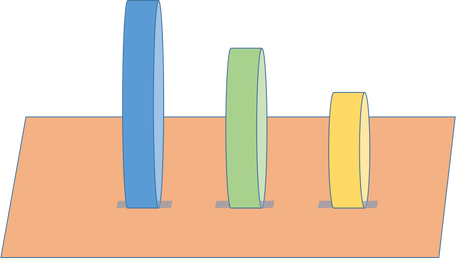Resonant Rings
|
Find out about resonance using paper and cardboard.
|
|
|
Curriculum links Physics KS3 &4: Waves, Resonance
Download the experiment guide here:
| ||||||
You will need: 3 strips of paper, about 2.5 cm wide and between 20 and 50 cm long; a piece of cardboard and sticky tape
- Make rings of different sizes with the paper and tape them in a row onto the cardboard.
- Hold the board level and shake it slowly from side to side.
- Gradually increase the speed. All the rings will move a little, but at certain speeds one ring will move much more than the others.
- Experiment with different speeds. Can you activate each ring in turn? Which ring is activated at the slowest speed and which the fastest?
What is going on?
All objects have natural, or resonant frequencies at which they tend to vibrate. These depend on several factors including their stiffness.
If an object is subjected to a driving force at its natural frequency it will vibrate strongly, or resonate. The resonant frequency of the smallest, stiffest ring is highest, and the largest ring has the lowest stiffness, and the lowest resonant frequency.
Frequency means the number of oscillations (back and forth movements) per second, so the large ring resonates at the slowest shaking speed, and the small ring is activated at the highest speed.
All objects have natural, or resonant frequencies at which they tend to vibrate. These depend on several factors including their stiffness.
If an object is subjected to a driving force at its natural frequency it will vibrate strongly, or resonate. The resonant frequency of the smallest, stiffest ring is highest, and the largest ring has the lowest stiffness, and the lowest resonant frequency.
Frequency means the number of oscillations (back and forth movements) per second, so the large ring resonates at the slowest shaking speed, and the small ring is activated at the highest speed.
